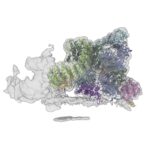Applications for the 2026 LMB PhD places are now open. Deadline is 2 December 2025.
About Us
The MRC Laboratory of Molecular Biology (LMB) is a research institute dedicated to the understanding of important biological processes at the levels of atoms, molecules, cells and organisms. In doing so, we provide knowledge needed to solve key problems in human health.
Our scientists tackle fundamental, often difficult and long-term research problems. The LMB has made revolutionary contributions to science, such as pioneering X-ray crystallography and electron cryo-microscopy (cryo-EM) to determine protein structures, the sequencing of DNA and the development of monoclonal antibodies. Twelve Nobel Prizes have been awarded for work carried out by LMB scientists.
The LMB also promotes the application and exploitation of our research findings, both by collaboration with existing companies and the founding of new ones, helping to advance medical research and the translation and application of knowledge.
The LMB provides an unsurpassed environment for both young and established researchers, with state-of-the-art facilities and a unique scientific culture. The LMB has always been very diverse, with a truly international outlook. We currently employ men and women from over 50 countries, and LMB alumni work in research organisations across the world.
Insight on Research
A new method to prepare cryo-EM samples avoids protein damage during freezing

Chris Russo’s group in the LMB’s Structural Studies Division, eliminate decades-long problem by preventing protein damage at the air–water interface with high-speed droplet vitrification.
Protein sorting in the Golgi: Should I stay or should I go?

Providing order amongst constant cargo traffic: Sean Munro’s group in the LMB’s Cell Biology Division and John Briggs’ group at the Max Planck Institute of Biochemistry, identify how GOLPH3 enables COPI vesicles to distinguish between Golgi resident and proteins bound for the endoplasmic reticulum.
Quick Links
Latest News
 LMB Prizes given to students, postdocs and staff
LMB Prizes given to students, postdocs and staffTo mark the end of the annual LMB Symposium, the 2025 Perutz Student Prize, Joan A. Steitz Postdoc Prize and Eileen Southgate Staff Prize were awarded. […]
 John Gurdon (1933 – 2025)
John Gurdon (1933 – 2025)Renowned developmental biologist John Gurdon, former Group Leader and Head of the LMB’s Cell Biology Division, has died aged 92. […]
Latest Publications
- Large transient assemblies of Apaf1 constitute the apoptosome in cells.
Borgeaud, AC., et al.
Nat Commun 16(1): 9429. (24th October 2025) - with a 57-codon genetic code.
Robertson, WE., et al.
Science 390(6771): eady4368. (23rd October 2025) - Author Correction: Structures of α-synuclein filaments from multiple system atrophy.
Schweighauser, M., et al.
Nature [Epub ahead of print]. (22nd October 2025) - Membrane Curvature During Membrane Rupture and Formation of Pentagonal Pyramidal Superassemblies by a Pore-Forming Toxin, Vibrio cholerae Cytolysin, Using Single Particle Cryo-EM.
Mishra, S., Chattopadhyay, K., Dutta, S.
Proteins [Epub ahead of print]. (22nd October 2025) - Temporal and spatial coordination of DNA segregation and cell division in an archaeon.
Parham, J., et al.
Proc Natl Acad Sci U S A 122(42): e2513939122. (21st October 2025) - Global analysis of translocon remodeling during protein synthesis at the ER.
Sundaram, A., Li, Q., Wan, Y., Tang, J., Wu, H., Smalinskaitė, L., Hegde, RS., Ji, Z., Keenan, RJ.
Nat Struct Mol Biol [Epub ahead of print]. (20th October 2025) - The unique synaptic circuitry of specialized olfactory glomeruli in .
Gruber, L., et al.
Elife 12. (20th October 2025)
See more Publications





